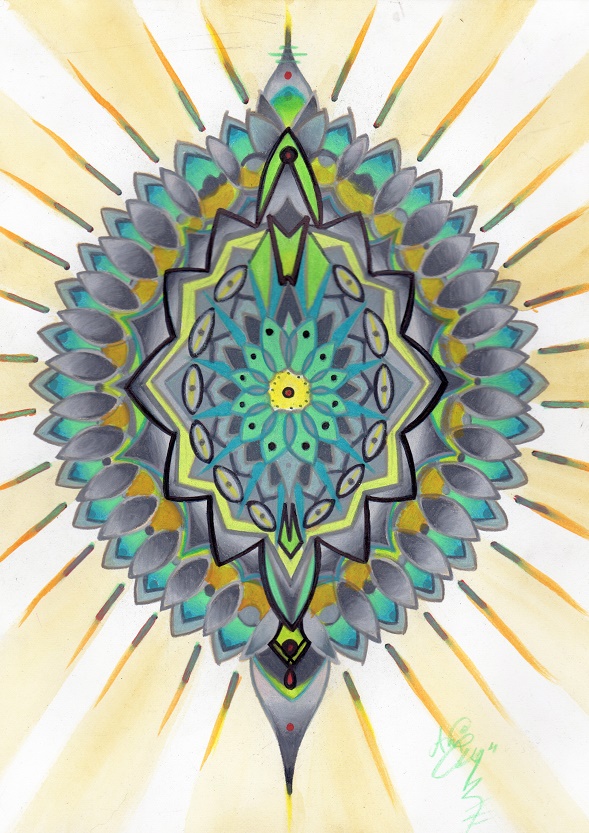Mandala, or mandorla?

mandala
I want to talk a little about why I paint and work with mandorlas rather than mandalas.
A mandala is a circular pattern, sometimes used ritually, which is built on radial symmetry. Each section of a mandala will be the same, drawing the eye into the center. The eye moves into the middle distance, being drawn past the paper or surface and off into what it perceives as a distant center. This is subconscious and happens because of the radial symmetry. We’re accustomed to seeing lines of perspective radiating from the distant horizon in art, so our eye interprets the center of a mandala as being far away (even if the artist has used every means to make it come forward at us, visually).
I think this is all fine and dandy. But-

mandorla
Mathematically speaking, a mandala is based on the circle, a single-edged shape. They are often meant to represent wholeness or unity. A triangle has three edges, a square four, and so on. Each of these shapes, symbolically speaking, have their own meaning- their own particular use. For example, the pentagram has been used as a symbol for humanity. Arms, legs, head- making a five-pointed star. The symbolism of triangles with fertility (mother, father, child) or some kind of trinity of gods, is common. A square is often used to represent a church, an institution, the law. The circle, used as it is to represent oneness (since it is a shape constructed of one line) is well known among many religious traditions.
The mandorla? It’s really only used as a backdrop. As a containing symbol for other objects. I think, though, that it can stand on its own. It’s less often used, less the subject of an image, than a circle or a triangle. Hell, even seven-pointed stars are more common than a two-sided shape. Why is this?
